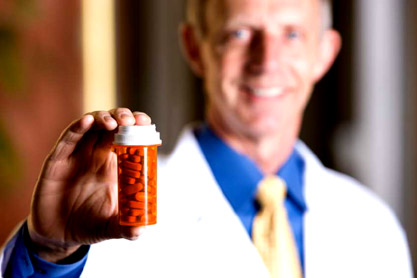The Duquesne – Jan 20, 2011
by Rebekah Coleman
 We’re taught from an early age that drugs, apart from being bad for you, are illegal. But what constitutes illegal these days?
We’re taught from an early age that drugs, apart from being bad for you, are illegal. But what constitutes illegal these days?
Imagine walking into a pharmacy in which crack, heroine or ecstasy line the back shelves. Such a place is unheard of, and yet “legal” drugs like Vicodin and OxyContin, which may be just as addictive and dangerous, fill drugstores across the country.
Last Thursday, the government announced it would restrict some of the most popular painkillers because of a growing number of poisoning and overdose cases. The strength of the pills will be reduced, decreasing potency by more than half in some cases.
But how is this going to stop someone from consuming an entire bottles of pills? Prescription drug abuse can be easy and alluring, especially when these pills are advertised daily.
Can you imagine having advertisements for cocaine? Cut to a shot of people walking through a sunlit park, smiling. An abnormally happy voice says, “A line or two perks you up and improves those pesky daily chores. Try cocaine. Side effects include paranoia, likely addiction and possible death.”
This seems like an outlandish joke, but here’s a quote of a real-life ad for Requip: A woman anxiously explains, over shots of her rolling around in bed unhappily, that her legs just can’t keep still. Luckily, though, her doctor tells her the problem can be solved by Requip. After taking the drug, she talks of its restorative power while the pictures on the screen show her sleeping peacefully. Lesson learned: taking pills can solve problems.
How did drug advertisements come to be like this?
In 1906, the Federal Food and Drug Act regulated drug advertising, which in part helped to regulate false advertising claims about products. More than 30 years later, in 1938, President Franklin Roosevelt signed the Food, Drug and Cosmetic Act, which replaced the previous act and regulated medication. This eventually led to the prescription drug industry.
Nowadays, the international legal pharmaceutical business is a nearly trillion-dollar industry. According to the Henry J. Kaiser Family Foundation, in the United States alone, the pharmaceutical industry rakes in $291 billion a year. And the companies behind the counter spend $4.8 billion on advertisements annually.
These advertisements are shown on television to anyone who happens to be watching, including children, which increases awareness of different types of drugs and clearly aims to encourage people to take them.
According to the National Institute on Drug Abuse (NIDA), one out of five U.S. residents has used prescription pills for nonmedical purposes, including narcotics, sedatives and stimulants.
The growth of prescription drug addiction strongly affects the most vulnerable of our population: the young and the old. The elderly are more likely to abuse pills than in the past due to an increase in medication distribution. More kids are trying pharmaceutical drugs on top of experimenting with alcohol and illegal drugs. A 2010 NIDA survey showed that 9.3 percent of 12th graders admitted to taking Vicodin without a prescription within the past year. Additionally, five percent admitted taking OxyContin.
You might wonder where they’re coming across these drugs: the street corner, or the medicine cabinet at home? It’s likely a mix between the two. Another source for pharmaceuticals is a bizarre new trend: online pharmacies. Online pharmacies claim to dispense medications legally, but some do not require prescriptions or even verification of identity.
Aside from being dangerous, this push toward overmedication is unnecessary. While increasing public knowledge is important, these advertisements can turn people into hypochondriacs.
Have you ever noticed how the side effects portion of the commercials takes longer to explain the main function of the pills? Requip, while it may decrease restless legs syndrome, can lead to nausea, drowsiness, vomiting, dizziness or changes in sexual urges.
Sometimes a headache is still a headache. Pills don’t always need to be popped. Obviously, those experiencing chronic pain or serious medical issues should not stop taking medication, but we have become accustomed to reaching behind the counter whenever we feel “abnormal.”
Drug abuse is nothing new, but if prescription drug abuse isn’t recognized as equally important, the issue will only grow to more dangerous proportions.

